Precious Metals News
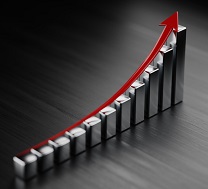
The Wall Street Journal: Silver Hits Historic $50 Mark as Investors Rush to Safety
Investors are pouring money into dollar alternatives like precious metals due to growing concerns over sticky inflation, widening budget deficits and political uncertainties worldwide.
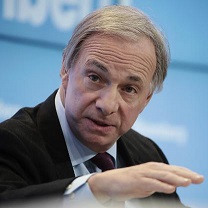
CNBC: Ray Dalio Says Today is Like the Early 1970s And Investors Should Hold More Gold Than Usual
Jeffrey Gundlach also recently recommended a high weighting in gold - as much as 25% in the portfolio - as he believes gold will continue to stand out on the back of inflationary pressures and a weaker dollar.

Finbold: 'Rich Dad' R. Kiyosaki Reveals Where to Invest $100 Right Now
The analysis reinforced why Kiyosaki frequently criticizes mutual funds and ETFs as vehicles for "losers" and why he insists that alternative assets are the only rational hedge in the current environment.

Forbes: Silver To Skyrocket: Retail Investors Drive Precious Metals to New Heights
Silver has already captured the attention of a vanguard of investors, forming a growing audience for the "maiden's metal." The magic number is, of course, $100 an ounce.
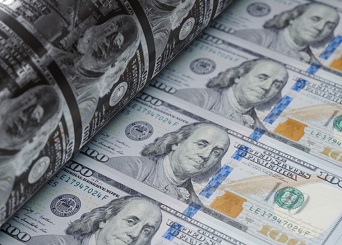
Fortune: Gold's Price Record is Driven by the 'Debasement Trade,' China, And Fear of An AI Bubble, Analysts Say
"A macro backdrop consisting of a weaker dollar, the resumption of the rate-cutting cycle, U.S. deficit concerns and steady foreign central bank buying have also supported the yellow metal's 50% rally this year."

Investing.com: Gold Eyes $4,000 Record, Silver Surges Towards $50 Milestone. Silver is making an equally impressive push toward $50/oz.
These fundamental drivers show no signs of weakening, enabling gold to push further into record territory.

Investopedia: Gold Is Pricier Than Ever. Here's Why Experts See It Rising Even Higher
95% of central bankers expect global gold reserves to increase this year, and a record 43% forecast their own bank's reserves would increase over the same period..
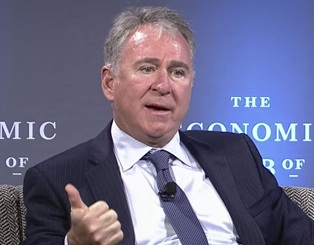
Market Watch: Billionaire Ken Griffin Warns on Consequences of Gold's Rally as Goldman Targets Nearly $5,000
You know what? "I now view gold as a safe harbor asset in a way that the dollar used to be viewed.' That's what's really concerning to me!"
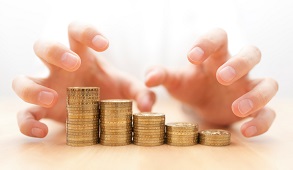
Market Watch: When the World's Largest Asset Manager And the 'Bond King' Both Agree - Run to Gold, Silver and Bitcoin
The market's already caught on. Gold is up more than 40% this year. Silver hit 14-year highs. Central banks are buying gold like it's 1999. they're preparing for D-Day: Debasement Day.
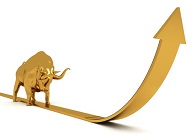
Market Watch: Why This Veteran Investor Sees Gold Hitting $7,000 By the End of Trump's Term
The metal's rally may still have years to go. Holmes sees gold climbing to $7,000 an ounce, potentially, by the end of President Donald Trump's second term as president.
-
Silver Academy: Francis Hunt Calls For $330 Silver
-
CNBC: DoubleLine's Jeffrey Gundlach Believes Holding a 25% Gold Position isn't Excessive
-
CNBC: Ray Dalio Says Gold, Non-fiat Currencies Will Be Stronger Stores of Value As U.S. Debt Mounts
-
Reuters: Ray Dalio Suggests Gold as Shield for US Markets at Risk of Heart Attack
-
The Washington Examiner: Gold Prices Soar, Outperforming Stock Market Amid Economic Uncertainty
-
Fox Business: US Debt Tops $37 Trillion And the 'Big, Beautiful Bill' Allows it to Rise Trillions Higher
-
New York Post: Gold Smashes $3,500 Record as Rate-cut Bets, Policy Turmoil Fuel Haven Rush
-
Portfolio Adviser: Why Gold Will Continue to Shine
-
The Street: Here's How Gold Prices Can Reach $5,000
-
Ainvest: Peter Schiff Warns US Dollar Faces Imminent Collapse Amid BRICS Rise
-
Bloomberg News: China's Central Bank Adds Gold in Nine-Month Buying Streak
-
CNBC: Gold Regains Its Luster as Market Worries About a Pullback in Stocks
-
Forbes: Gold's Rally Was No Surprise - And It's Not Done
-
Fox Business: US National Debt Hits Record $37 Trillion
-
Investing.com: Ray Dalio Warns of Fiat Trust Breakdown, Says Gold Standard Return is Possible
-
USA Today: Uncertain Economic Times? That Means it's Gold's Time to Shine
-
Barron's: David Rosenberg: July Jobs Report 'Had a Recession Label All Over It.'
-
Benzinga: Gold Revaluation: Nuclear Option America Might Pull Again
-
Benzinga: Silver's Supply Crunch Sparks Bull Case: Report
-
Bloomberg News: Fidelity Says $4,000 Gold Possible as Fed Cuts, Dollar Drops
-
Business Today: Gold Hit Record High; Silver's Bull Run Yet to Start: Report
-
Investing Haven: How Shifting Debt Levels Are Driving Gold and Silver Prices
-
Barron's: Why Gold Could Hit $4,000
-
Bitcoin.com News: Is Silver Set to Explode? Predictions Target $50 Price Tag by Year's End
-
Bloomberg News: Central Banks Fret More Over FX 'Weaponization,' UBS Survey Says
-
Bloomberg News: China's PBOC Keeps Buying Gold as Reserves Grow For Eighth Month
-
CNBC: America's Deficit Reckoning - How the U.S. Debt Spiral Could Spark a Crisis
-
Forbes: Central Banks Buy 20 Tons of Gold in May, Says World Gold Council
-
Investing.com: Silver's Breakout Rally is Slowly Unfolding
-
Barron's: Gold and Silver Have Cooled. Why It's Time to Buy
-
Fortune: Gold Prices Should Hit $4,000 as U.S. Deficits May Overshadow the Israel-Iran Conflict, BofA Says
-
Fox Business: Top Economist Warns America is Heading Toward Economic Disaster the Fed Can't Fix
-
Bloomberg News: DoubleLine's Gundlach Says 'Reckoning Is Coming' for US Debt
-
CNBC: Buy Hard Assets Like Gold Ahead of a Potential Bond Market Panic, Says Bear Traps' Larry McDonald
-
Finbold: Gold on Fire as Investors Ditch Fiat Currencies
-
Fortune: Central Banks Have Dumped $48 Billion in Treasuries as Foreign Wealth Officials Divorce the Dollar
-
Reuters: Central Banks Favor Gold Over Dollar for Reserves, WGC Survey
-
The Wall Street Journal: Gold Is the Real Rival to the Dollar's Reserve Status
-
The Wall Street Journal: Gold Surpasses Euro as Second-Largest Global Reserve Asset, ECB Says
-
Benzinga: Gold Demand Holds Firm as Dollar Confidence Wavers
-
Bloomberg News: Goldman Urges Investors to Buy Gold and Oil as Long-Term Hedges